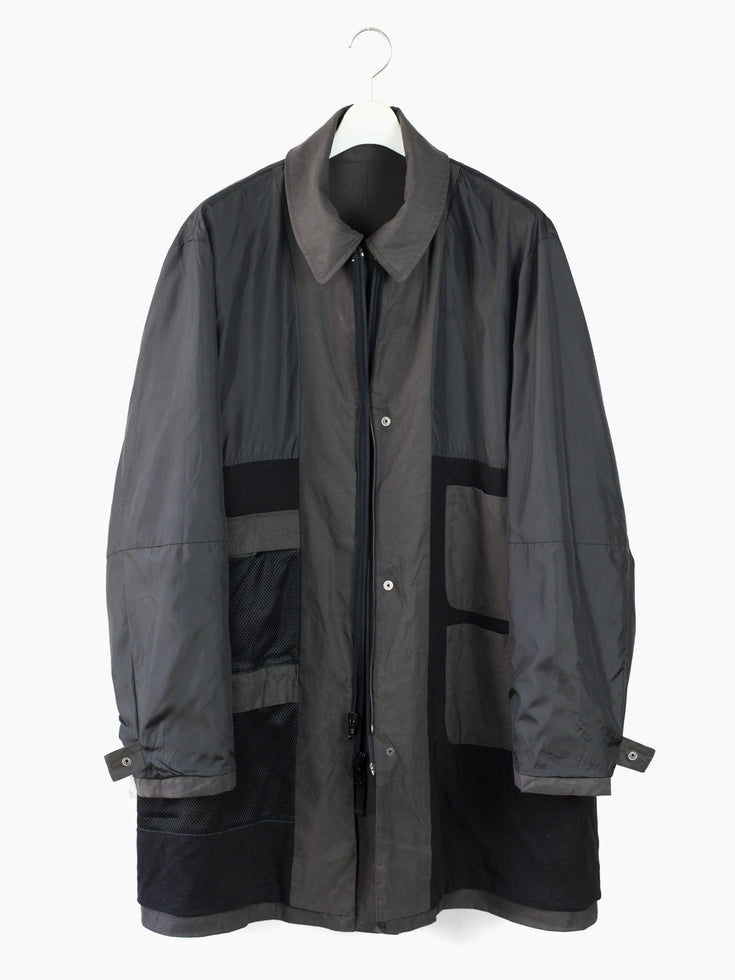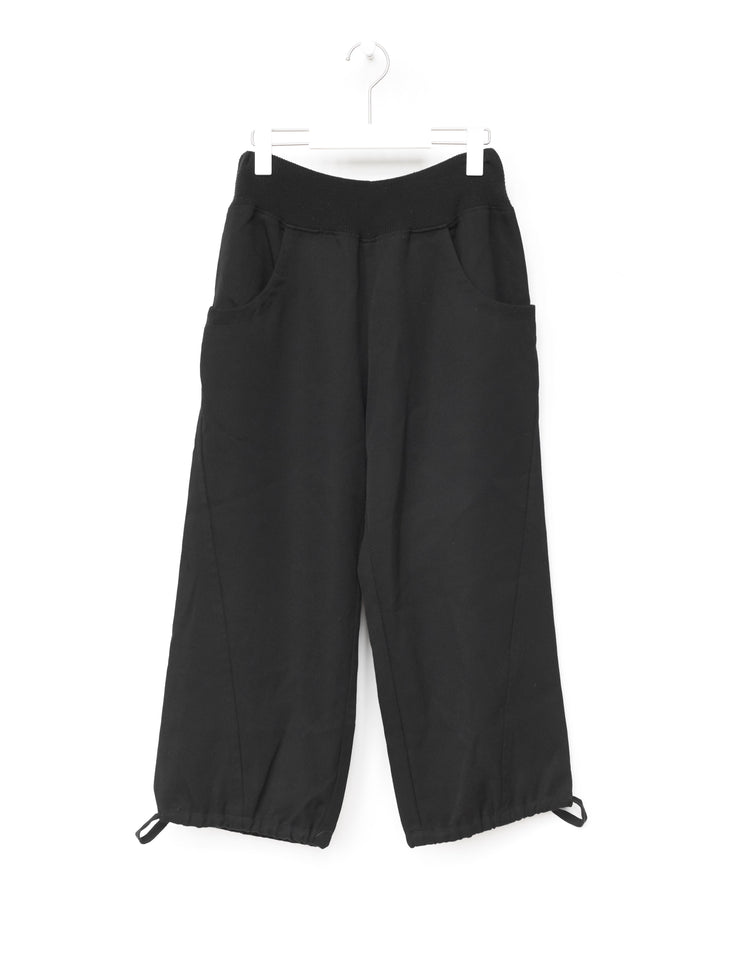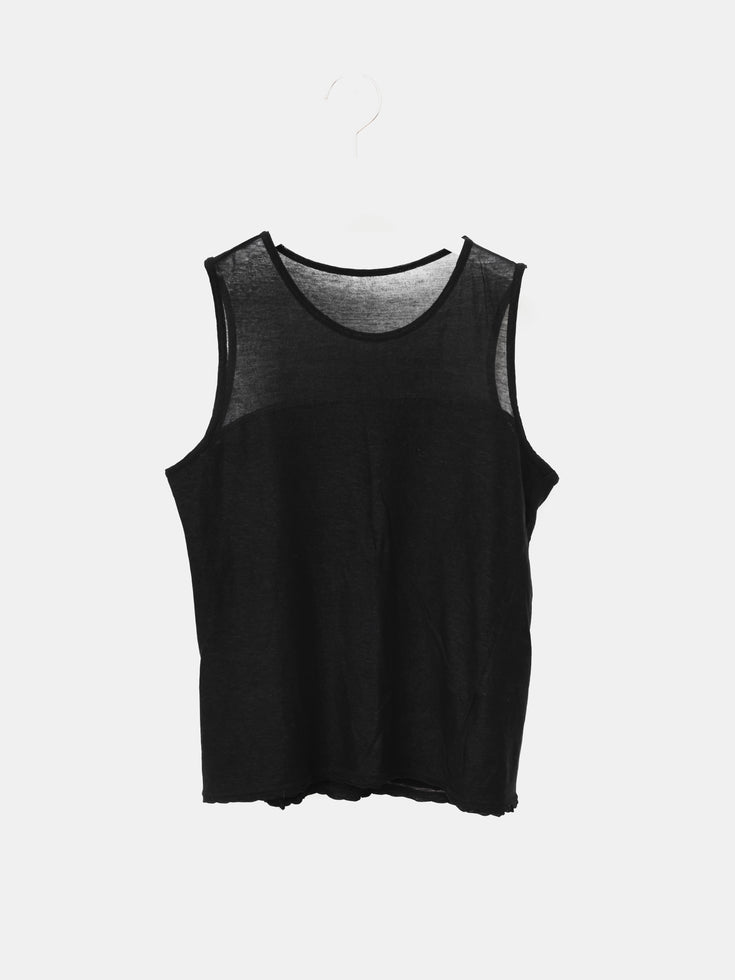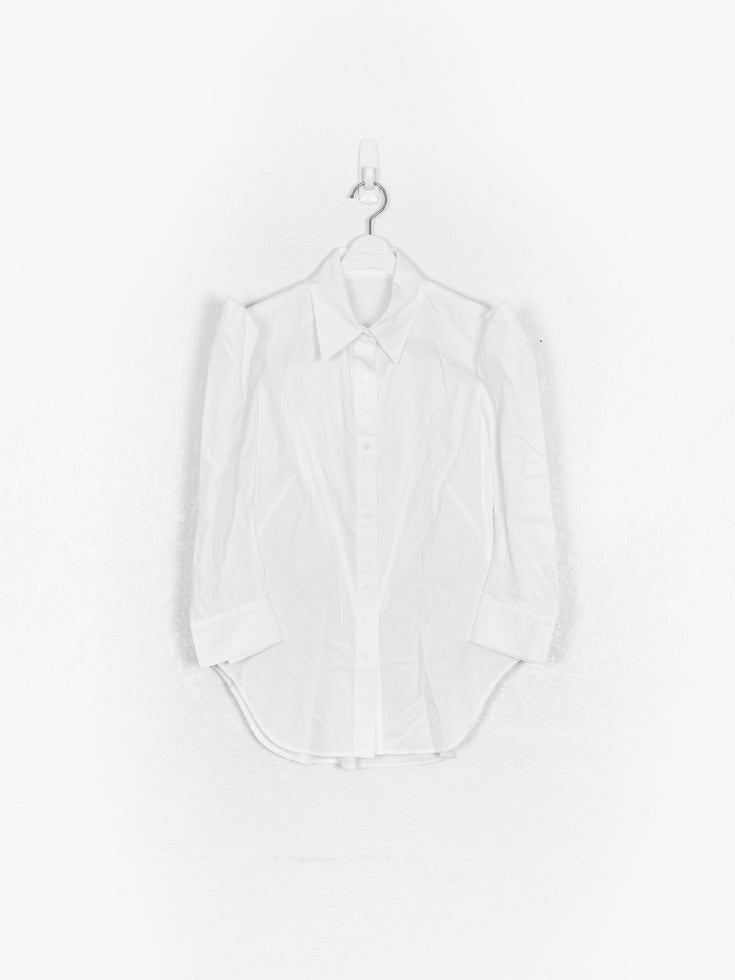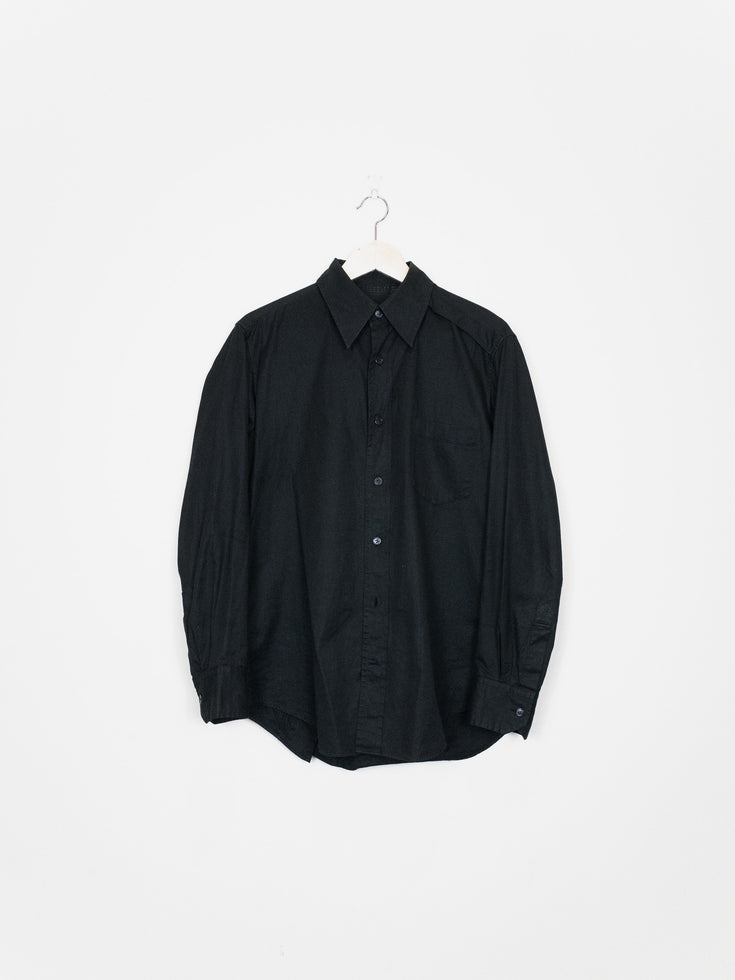
We're proud to have a small showcase of work done by Yohji Yamamoto over the years. These range from very old to more recent pieces and cover both men's and women's garments. We do think the pieces can very easily speak for themselves but have also included some fun thought-provoking writing to accompany the garments.
We invite you to read and browse as you wish!
The Private and Public in Yohji Yamamoto Pour Homme Fall/Winter 2009
The themes of Yohji Yamamoto's Fall/Winter 2009 collection seemed to be centered around the juxtaposition of the public and the private, the formal and the personal, the inside and the outside. The collection could be seen as an inquiry into how an individual chooses which parts of his life to hide and reveal, and Yohji circumvents traditional notions of dress to illustrate the contention between the two. He showcases pieces of clothing normally relegated to the most private/personal spaces boldly as outer layers, layering silky voluminous boxer shorts over trousers and displaying a full look composed only of pajamas and slippers (complete with the model tucking a newspaper and baguette under one arm). Luxurious cupro linings were rigorously executed in amazing smoky textured prints with animal motifs, inviting the wearer to flip pieces inside out to showcase the work put in and the hidden identity of the garment. This act of turning a coat inside out also invites the wearer to consciously consider their own dual public-private personality, the simple styling choice acting as a proxy for the wearer to activate different characters within their own identity.
The animal imagery sprinkled throughout the collection highlights another pertinent dichotomy between the refined and the animalistic. Looking at the boxer shorts, the tiger's head is cheekily placed on the crotch in an obvious primal euphemism--interior linings depict the "wild" and menacing Cerberus. Clearly, Yohji believes in the untamed physicality of our private selves, but it is the placement and juxtaposition of these 'wild' pieces in contention with the traditional menswear of the collection that forces us as the viewers and wearers to question the existing ideas of what should or should not be shown. Why NOT showcase our underwear over our pants? Why or why should we not wear a garment inside out? Are some parts of ourselves too gaudy to be revealed and best kept neatly tucked away?
These quandaries may sound a bit dated--bumming around in one's pajamas or revealing one's unkempt and private image becomes more and more widespread and acceptable, but on a broader level, I think these themes of privacy and public image remain as relevant as ever and have taken on a different character in the age of social media. What can be gleaned when we apply the investigation of this collection to how we conduct ourselves online? Our censored and fabricated digital representations of self are simply another medium for us to test the bounds of personal and public. Can a truly personal space exist anymore when even our undergarments become objects to be flaunted and we have found social value in touting manufactured scenes of intimacy? Will we live constantly in a quasi-paranoid dissociative state where we watch and judge ourselves from a frame of reference outside our own selves? Perhaps the craftsmanship put into the traditionally hidden part of these garments even contributes to the commodification of the everyday as it furthers the expectation of perennial glamour. We are constantly redefining what things in our lives are expected to be seen and unseen, but with a pan-optic gaze encroaching there may simply be nothing left to hide....
Deconstructionist Design
Deconstruction as a design methodology has become increasingly prevalent in fashion, but looking back, we can see that one of the originators in the 1980s was Yohji Yamamoto. Hopefully, through a study of some of the pieces offered here we can link the unique deconstructionist thought process to the end product and better understand what it can accomplish for the audience and wearer.
Deconstructionism invites a closer and more critical perspective regarding things that are traditionally taken for granted. The diagonally cut black shirt reinterprets a sleeve cuff closure as an asymmetrical fishtail hem while the pair of rebuilt trousers utilizes the displacement of button closures to slash openings that allow one's body to peek through. In the exercise of displacing, reinterpreting, and reusing other clothing elements, individuals may discover novel uses for seemingly unalterable clothing paradigms. The back zip coat we showcase moves the front closure of the jacket to the back and in doing so produces an inherent breeziness and openness that the wearer can experience anew.
Another way Yohji affects a garment is through 'deformation,' the technique which was utilized to create the grey knit sweater we have on display. Although the base draws from the form of the archetypical knit, it has been distorted and manipulated almost beyond recognition. We can see the abstract breakdown of the elements that one would think compose a grey sweater -
two holes for the body, the sleeves, and holes at the cuff - willingly edited until they become almost indistinguishable. It is this effect of creating a calculated space between the recognizable and the unidentifiable that is one of the most productive parts of deconstruction in fashion - when the designer poses a challenge against clothing conventions, the ones who wear the piece in turn challenge social conventions. Clothes are symbols and representative devices for people to select and wear. Under this guise, garments that reassemble known elements that people may judge you by provide a way for the wearer present a simultaneously jarring and familiar presence - to produce a confusion that may let the wearer exist outside of people's easily assigned perceptions.
Deconstruction in fashion comes rooted in deep inquiry. It is predicated by thorough investigation, questioning, and consideration. The end products offer this challenge to the wearer as well, allowing them to look past convention and construct a stylistic identity without relying on the tropes of fashion. The result is a style that is unique and idiosyncratic, and perhaps a deeper understanding of what, when worn, can make you happy.











